










































Bank of Stockton is a commercial bank with a proven track record of sound banking management principles and a strong consumer and commercial customer base. As the oldest bank in California still operating under its original charter, we are here for the long haul. We have survived recessions, depressions, economic downturns, COVID-19 and many uncertainties throughout our history. Established in 1867, just two years after the Civil War, the Bank of Stockton’s founding principle, “With the safety of the depositors in mind” was a promise to our customers and the community to keep depositors’ money safe and secure. As we enter our 156th year of community banking, we’ve weathered many historical challenges along the timeline of our existence but the foundation upon which we began remains a constant you can bank on.
We are proud to continue “Withstanding the Test of Time” and be a source of strength and stability for our customers and our communities.

PUBLISHER
Hank Vander Veen
EDITOR
Sabra Sta ord
CONTRIBUTING WRITERS
Christopher Correa
Kristina Hacker
Dennis Wyatt
ART DIRECTOR
Harold L. George

SALES & MARKETING
Chris Castro
Beth Flanagan
Rich Matheson
Karen Olsen
Corey Rogers
Melody Wann
Charles Webber
SPECIAL CONSULTANT
Larry Dovichi
Downtown districts are often times the heart of a city, both in regards to the location and the community pride. ese areas are home to the mom and pop businesses that have been helping communities thrive for generation a er generation.
Downtowns are also where people come together to eat, drink, shop, learn, explore and be entertained, all of which gives a community its identity.
e towns featured in this issue — Sonora, Tracy, Hughson and Mariposa — all have plenty of reasons to give them a visit and explore some of the hidden treasures they all hold. Please join us in supporting the local businesses, governments and organizations that make up the Downtowns of the 209.
95380 209multimedia.com
©Copyright 2023. Downtowns in the 209 All rights reserved. Reproduction in whole or in part of any text, photograph or illustration without written permission from the publisher of Downtowns in the 209 is strictly prohibited. The opinions expressed in Downtowns in the 209 are those of the authors and do not necessarily re ect the view of 209 Multimedia management or owner. Downtowns in the 209 assumes no responsibility and makes no recommendation for claims made by advertisers and shall not be liable for any damages incurred.
Hank Vander Veen Owner/Publisher 209 Multimedia hvanderveen@209magazine.com
































































Sonora is the county seat of Tuolumne County and its downtown area is a mix of the town’s Gold Rush history and modern destination location of unique shops and eateries that both locals and visitors alike can enjoy.

Sonora is one of the oldest cities in California, incorporated on May 1, 1851. It was historically referred to as the ‘Queen of the Southern Mines.’ Sonora’s prosperity during the late 1800s and early 1900s can still be seen today in the many historic homes and buildings that line the city’s main street, Washington Street.
In 1986, Sonora was chosen as one of the first “Main Street” cities in the State of California. Working with the National Trust for Historic Preservation and the California Main Street program the City Council committed over a quarter of a million dollars in an effort to revitalize the city’s historic downtown.
That history now sits alongside trendy restaurants and pubs, boutiques and galleries, making it a unique place to visit.
“What’s really awesome about down-
town Sonora is we’ve had a resurgence in new businesses,” said Visit Tuolumne Marketing Director Katie Kirkland, whose office is also located along Sonora’s Washington Street. “There’s new life in downtown, where old meets new. Old time architecture is filled with new restaurants and boutiques.”
Kirkland mentioned The Armory, a combination gathering spot, bourbon bar and beer garden.
“It’s like a speakeasy with a ‘Great Gatsby’ vibe,” she said.
One of the area’s newest ventures is into health and wellness, with businesses like Stix & Stones that is a one-stop shop for skincare and make-up lines, along with massage and salon services.
Sonora continues to make history as it recently became one of just a few areas in the country designated as a Blue Zone. Adventist Health Sonora is funding and promoting an initiative called the Blue Zones Project in Tuolumne County, with a downtown Sonora headquarters. “Blue zones” are areas around the world where
What’s really awesome about downtown Sonora is we’ve had a resurgence in new businesses.
people live longer with lower rates of chronic disease. Researchers found that people in these regions live to be 100 years old at a rate 10 times higher than in the United States, according to www. bluezones.com.
In Tuolumne County, you can see the Blue Zone initiative in healthier options at local restaurants and grocery stores and the promotion of hiking and biking trails.
Downtown is also the site of the city’s annual Christmas Town events and year-long Second Saturday happenings. Christmas events begin the Wednesday before anksgiving with the lighting up of the historic Red Church at the top of Washington Street and the annual downtown business decorating contest. Holiday events such as the annual parade, carriage rides, gingerbread house decorating contests and more take place every year.
Downtown Sonora doesn’t wait for Christmas to have a party. All year long, downtown Sonora heats up at night the
Second Saturday of every month with live music, art shows, poetry readings and late-night shopping.
“It’s just a big party every second Saturday,” said Margott Weltin, Sonora Chamber of Commerce vice president and marketing director.
Sonora celebrated its 100th Second Saturday event a few years ago, and there’s no plans to stop. Starting in June, monthly free concerts will also happen on Second Saturdays.
“We get locals, it’s a big night to see your neighbors, we also get people from the Valley, the Bay Area and Sacramento. It’s become a thing…the word is getting out,” she said.
For more information about Downtown Sonora, visit www.sonoraca.com or visittuolumne.com.
e City of Sonora has put together a Historic Downtown Walking Tour, which lists many of the historic sites along Washington Street. Some of those include:


e Sonora Opera Hall, 250 S. Wash-
ington St.: e Sonora Opera Hall is one of the few buildings in Sonora that still serves its original purpose, though it has ironically only been an opera hall for a few years of its life. In 1879, Vermont resident and civil engineer James George Divoll built the Star Flouring Mill on $250 worth of land, where the Opera Hall now stands, to compliment the pro ts of his mining ventures. Divoll partnered in the ouring mill with Joseph Bray, and together the two bought the local Bonanza Mine at the top of Washington Street.
In the early hours of August 6, Joseph Bray awoke to nd his mill ablaze with his brother Jacob trapped inside, who eventually perished with the mill. It is believed that the two suspicious men from the night before had broken into the mill to steal the gold, and had by some means set the Star Flouring Mill on re, though the true cause may never be known.
Unfazed and seeing a door for opportunity, Divoll and Bray began almost
immediately to construct the Opera Hall from the remaining brick and stone walls of the Star Flouring Mill, converting the mill’s five bay openings into the building’s five still-standing front entrances. Only four months after the fire, on Christmas Eve of 1885, the Sonora Opera Hall opened for business, its first event being the Skating Carnival and Ball. As a hall, it became a center for cultural and social life in Tuolumne County, hosting traveling entertainers, theatrical displays, fairs, and patriotic events atop its inner stage.
Unfortunately, the Opera Hall never turned a profit, and was forced to close in 1896, a little over 10 years after its debut. It was converted into a carpentry shop and planing mill after Bray became the sole owner and was later sold and became the Opera Hall Garage from 1911 to 1979.
In 1986, the building was purchased by the City of Sonora, which through state grants, redevelopment funds, and volunteer work, was able to restore it to its former state as an Opera Hall. Today, the Sonora Opera Hall continues to live out the dream of its builders, being open for public rental, booked with concerts, dances, weddings, high school proms, and all means of social gatherings.
The City Hotel, 139-145 S. Washington St.: The structure was built in 1852 by James Lane and Alonzo Green, one of Sonora’s first City Mayors. The twostory City Hotel was built in place of a previous hotel that had been destroyed in a great fire earlier that same year, and
was constructed of two-foot thick slate walls bound by adobe mortar. Behind the hotel was the local “Hanging Tree”, where, after being found guilty for assault, outlaw Jim Hill had been forcibly seized from the County Sheriff by an angry mob of miners and hanged. The hotel was nonetheless marketed as a family inn, and featured a saloon, billiard rooms, and dining rooms on the first floor, with twenty private rooms on the second. The City Hotel became the end of most local stagecoach routes, bringing in many weary travelers, including author Mark Twain. Around the 1860s, a man by the name of Oliver Bemis took over management of the hotel. His family lived in an apartment near the back of the hotel, closest to the water heater and gravity-fed water tank so as to always have hot water. His nephew, Charles Fitch, eventually inherited the City Hotel, and married May Lick, the daughter of Rebecca Lick, owner of Rebecca Lick’s Ice Cream Parlor and Candy Store in the Lick Building next door. It is said that many of the town’s prostitutes would get candy from Rebecca Lick, and then be housed at the City Hotel by her daughter to rest up.
The Bemis/Fitch family kept the City

Hotel until around the 1930s, when May returned to the Lick Building to live with her aging mother. The City Hotel no longer serves as a hotel and has since been remodeled and converted into office rooms, but its original namesake of the “City Hotel” can still be seen faintly painted on its upper left side.
The Tuolumne County Military Museum, 9 N. Washington St.: This local memorial hall is dedicated to honoring those who served the US in World War I, World War II, Korea, Vietnam, and other successive battles.

The Memorial Hall was built with Columbia marble in 1933, atop the original site of the Art and John Duchow printing shop, home of the successful Tuolumne Independent newspaper. The Tuolumne Independent eventually moved to a new building further down Washington Street, and the abandoned real estate became an antique iron shop before being torn down to make way for the Memorial Hall.
The Sonora Fire Museum, 125 N. Washington St.: The museum is actually not a historic building, but instead houses the history of the long battle with Sonora’s oldest foe: fire. Sonora experienced its biggest fire in 1852, less than a year after its incorpora-
The Sonora Fire Museum is actually not a historic building, but instead houses the history of the long battle with Sonora’s oldest foe: fire.
tion. After falling asleep while reading, a man’s candle at the Hotel de France engulfed some drapes and created a fire of such intensity that nearly the entire town was leveled. Starting near the intersection of Stockton and Washington streets, the fire could not be stopped until it reached all the way to the site of the current St. James Episcopal Church. Luckily, the only fatality was of the man whose candle had started the fire. After the fire, the City Council ordered the widening of many of Sonora’s streets, and the abolishing of a Mexican-style City Plaza that used to sit at the base of Washington street. Side streets were also added between housing blocks as fire breaks. The previously burned wooden buildings were replaced with ones of slate, adobe, and steel so as to help prevent future disasters.
The Red Church, 42 Snell St.: Locally referred to


as “The Red Church” for its distinct color, the Saint James Episcopal Church has served as the head of Washington Street and the unofficial mascot of Downtown Sonora for over a century. In 1859, as Sonora was beginning to take shape as more than a simple mining camp, calls for an Episcopal congregation were made. The church was completed in 1860, and was designed by Reverend Gassman, who took inspiration from the Gothic Revival in his homeland of Norway. It was built atop the tunnels of the Bonanza Mine, one of the most successful mines in California, which can still be accessed inside the church. The Red Church’s first sermon was held on the first Sunday of October 1860, by Reverend Gassman, the church’s first Rector and minister.

On March 30, 1868, the west side of the building was extensively damaged by a fire started across the street at the United States Hotel. The hotel was completely destroyed but the local firemen were able to save the Red Church, albeit with some major damage. The church was repaired and reopened and has remained largely unchanged since.
The church was consecrated by Reverend Kip in 1870 and is known to be the seventh of the Episcopal churches in California and the oldest in the state. Today, it is officially recognized by the state as California State Historic Landmark No. 139, and still remains the center of Episcopal worship in Tuolumne County, holding regular sermons and being frequently utilized for weddings and other social gatherings.
For the complete downtown tour map, visit: www.sonoraca.com/downtown-sonora.
We’re committed to providing a unique relationship-based banking experience to our local communities.
As one of the largest locally managed banks serving this area, we’ve worked to strengthen our local communities and economies by channeling loan dollars back into the neighborhoods where our depositors live, work, and play.


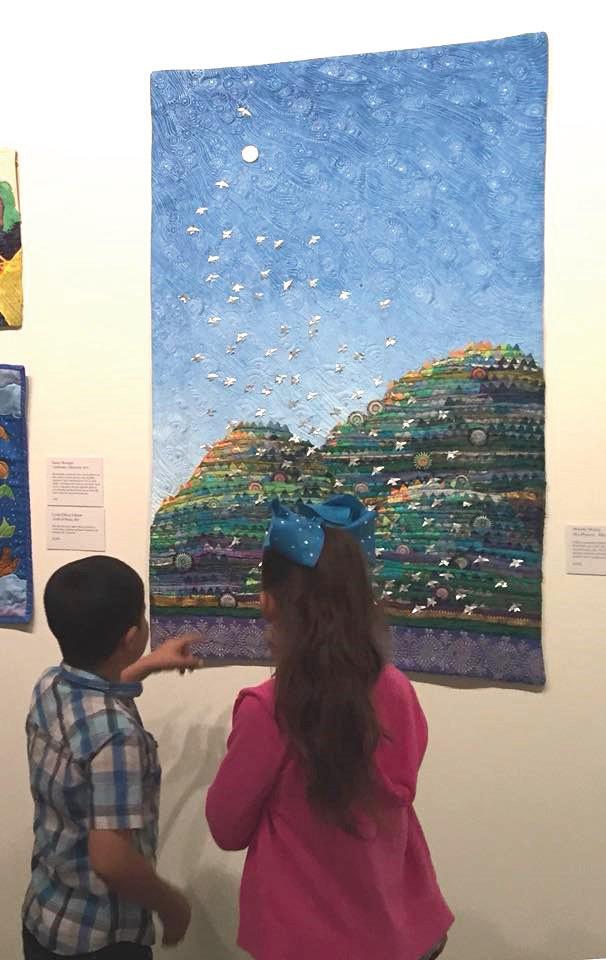

Call, click, or stop by one of our branchesto see for yourself why community banking is The Clear









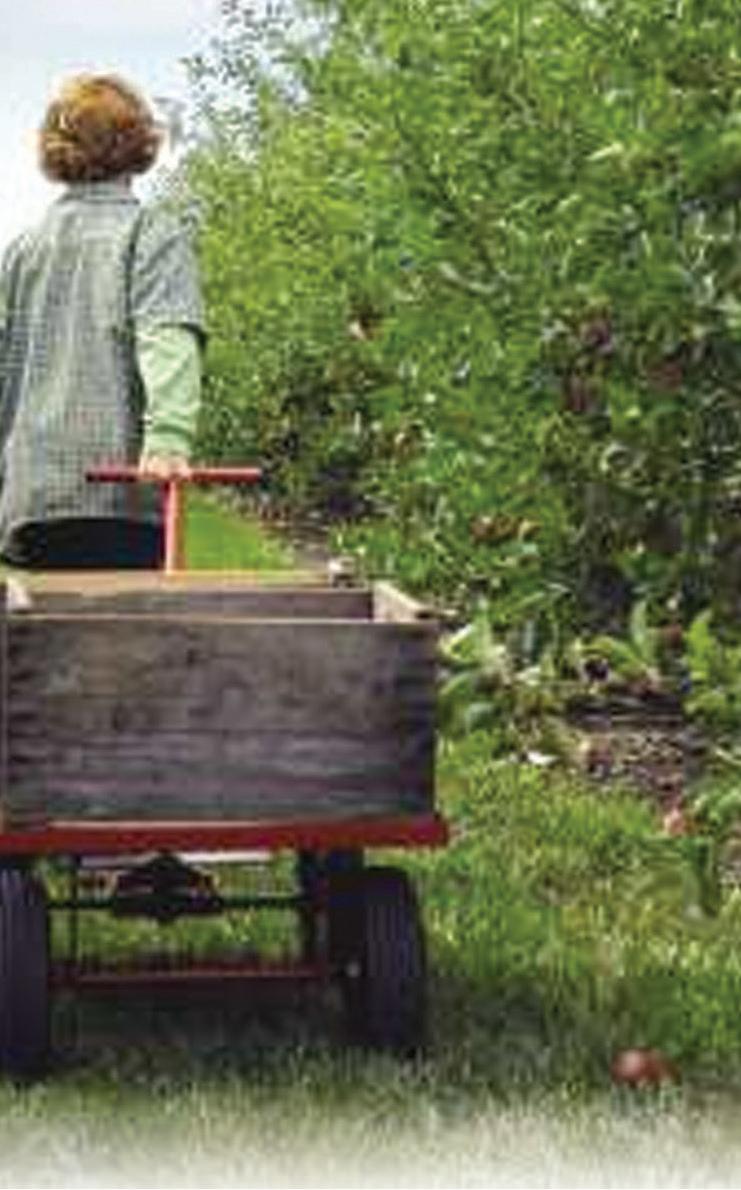





















Tracy boosters like to tell the world about the “Tracy Triangle.”
It’s a refence to three major freeways — Interstate 5, Interstate 580, and Interstate 205 — that have made it the Northern California hot spot for distribution centers including three Amazon fulfillment centers along with a long “who’s who” list of other major retailers.
The best angle Tracy has to offer, though, isn’t unparalleled freeway access for a city of 95,610.
It’s downtown Tracy.
It checks all of the required boxes you’d expect in a vibrant Valley downtown enjoying a renaissance as a dynamic gathering place: Dining options, traditional and boutique retail, visual/performing arts center, and extensive community-event style programming.

But it also has the perfect setting in a dozen blocks with an eclectic collection of architecture, pedestrian friendly streets, and — a must to make blistering summer days tolerable and summer evenings a delight —
a massive street tree canopy.
As such, al fresco dining is a common offering among 20 plus restaurants that run the gamut from bistros to Thai food.
More importantly there is a repertoire of different vibes. You can get the laid back sidewalk dining feel of Turlock or Lodi, the bustle of a Pleasanton downtown on a Saturday evening or find a quiet spot away from the crowd.
Mexican dining options are an example.
There are places that offer patio dining. But there are also old school options such as Mi Esperanza Market that has a takeout kitchen tucked into the heart of a store with narrow aisles jammed with ethnic and traditional groceries to the Casa Grande Bar & Grill.
Casa Grande is a restaurant you will find on the first floor of the historic Tracy Inn that sits at the front door of downtown on the southwest corner of Eleventh Street and Central Avenue.
The two-story structure, with its iconic rounded wall on the corner that is a two
Downtown Tracy checks all of the required boxes you’d expect in a vibrant Valley downtown.


years’ shy of being a century-old, is an example of the once popular Mission Revival Style in early 20th century California that was reflected in public buddings of the era ranging from high schools and train stations to government buildings.
The Tracy Inn continues to be a community gathering place for meetings and parties on the ground floor banquet halls operated by the Casa Grande Mexican restaurant off of the inn’s grand lobby. The main dining area has a true 1920s feel.
Downtown Tracy’s heart is Central Avenue — five blocks stretching from Eleventh Street (the Old Lincoln Highway) to the Spanish-style Tracy Transit Center on the roundabout featuring the 18-foot bronze sculpture “Harvest of Progress.”
The sculpture is a nod to Tracy’s past, present and future.
A farmer faces the east, a railroad conductor faces the west. As such, they represent what gave birth to the community and continues to power Tracy’s growth.
It is also at the roundabout you will find arguably the most expansive downtown plaza/promenade for community events in the region.
It’s a wide expanse known as the Front Street Plaza in the middle of East Sixth Street. It’s heavily tree-lined with large swaths of grass broken up by pavers.
This is where a lot of events take place, notably the City of Tracy’s summer Block Party Series that feature evening concerts from 6 p.m. to 9 p.m. on Friday nights. They run the gamut from Latin, country, rhythm and soul, and reggae to contemporary sounds such as from the 80s.
Downtown Tracy is among the few Northern San Joaquin Valley communities that boosts of a year-round farmers’ market.
It takes place Saturdays on the southern end of Central Avenue from 8 a.m. to 1 p.m.
And while Tracy is home to one of the largest Amazon facilities in the world — the multi-story, 3.7-million square-foot fulfillment that opened earlier this year on Grantline Road — it isn’t the grandest thing in Tracy.
The Tracy City Center Association complements the Grand Theatre’s offerings with a long list of ongoing downtown events that go beyond the weekly farmers’ market.
Among them are:
*Taps on Tenth Craft Beer Tasting in April and November.
*Vintage & Antique Faire in May.
*Fourth of July Parade.
*Social at Sunset in July.
*Blues, Brews & BBQ in September.
*Wine Stroll in September.
*Movies on the Plaza during the summer months.
*Downtown Art Walks during the summer months.
*Street Dreams Car Show in October.
*Halloween Candy Crawl & Festivities.
*Girls’ Night Out in March and October
*Holiday Ornament Stroll in December.
It’s the Grand Theatre for the Arts.
The municipal interdisciplinary arts center is considered the only one of its kind in the State of California offering professional and community-based fine arts programming through arts education, exhibitions, performances and rentals of all kinds, in a single complex, and is one of only a small network of similar facilities in America.
It opened on Central Avenue in 1923 as a premier vaudeville house. It was converted to show “talkies” by the late 1920s.
The present-day reincarnation of the Grand Theatre featuring 37,000 square feet that included combining what were originally three adjoining hotels was completed in 2007.
It is now in its 16th season with just under 50 programmed concerts, theatrical productions and such in its current season.
The main theater seats 547 while the small theater accommodates upwards of 100. There is also a dance studio, kids art studio, music rooms and more.
*Holiday Light Parade & Tree Lighting Ceremony in December.

*Santa’s Workshop.
Tracy sprang up in 1878 when construction of a new rail line was started from Oakland around the shores of San Francisco Bay, through Martinez to connect to the Central Pacific at a point three miles to the east of Ellis. The line had been built to make possible greater efficiency by avoiding hills and to eliminate the expense of helper engines.
The result of the new rail line was the founding of Tracy on September 8, 1878, named for Lathrop J. Tracy, a grain merchant and railroad director.
Tracy continued to grow as a railroad center. A new line through Los Banos was the fastest and least expensive to Los Angeles. In March of 1894, railroad headquarters at Lathrop were moved to Tracy. All of the railroad equipment including engines and buildings were moved.
Businesses were initially centered on Front Street (today’s Sixth Street).
The Tracy City Center Association complements the Grand Theatre’s offerings with a long list of ongoing downtown events that go beyond the weekly farmers’ market.
After the turn of the 20th Century, commercial activity moved north on Central Avenue. As Eleventh Street became Highway 50, a busy thoroughfare, it fostered the creation of a number of businesses, including the historic Tracy Inn, completed in 1927.
Tracy was incorporated in 1910. It grew rapidly after the first irrigation district was established in 1915. Although railroad operations began to decline in the 1950s, Tracy continued to prosper as an agricultural area.
Today, the railroads still play a key role in powering the city’s economic engine especially with the advent of Altamont Corridor Express commuter rail service to the job-rich Silicon Valley.
Tracy capitalized on its location of being roughly equal distance to San Jose, San Francisco, and Sacramento to become the fastest growing logistics hub in Northern California.
The easiest way to downtown Tracy is to take the Tracy Boulevard exit on Interstate 205 and travel south to Eleventh Street. Turn left at Eleventh Street and travel to Central Avenue (the two-story Tracy Inn is in your right) and turn right.
For more information on downtown Tracy offerings go to the websites for:

*The Tracy City Center Association at tracycitycenter.com
*The Grand Theatre for the Arts at atthegrand.org
*The City of Tracy at cityoftracy.org


































Every year visitors stream through Mariposa en route to take in the grandeur of Yosemite National Park. If they’re lucky, they will spare some time in downtown Mariposa because it is brimming with a vibrant restaurant and bar scene, a creative art collective, welcoming shops, unique experiences and historic treasures that make this town a worthy destination all on its own.
“Downtown Mariposa is like a breathing, living being,” said Kari Kisela, the membership, communications and events coordinator for the Mariposa County Chamber of Commerce and Visitors Center. “There is always something new blossoming.”

Mariposa is rich with history and the Mariposa Museum and History Center is an excellent starting point for those visitors ready to explore the past. Founded in 1957, the museum tells the stories of the indigenous people, Spanish settlements, gold miners, town founders and the history of Mariposa County and Yosemite. The Smithsonian Institute called it “the best
By SABRA STAFFORDlittle museum of its size west of the Mississippi.”
The museum has an impressive exhibit highlighting the Miwuk history and culture, including a collection of hand-woven baskets, tools, artifacts and a cedar bark covered teepee.
The museum also has an excellent recreation of what Mariposa looked like during the Gold Rush, with visitors able to peak inside a miner’s cabin, a homestead, the schoolhouse, a saloon and old shops.
Outside the museum is the 5-Stamp Mill, one of the few stamp mills still in operation in the state. There’s also the original Gazette building, which was the home of the Mariposa Gazette newspaper for 70 years. The original press is still operational.
The museum’s gift shop features the works of several local artists and authors.
“There are so many wonderful things to see at the museum,” said Barbara Gunnells, the museum’s office administrator and bookkeeper.
The museum is open 9 a.m. to 4 p.m.
The museum has an impressive exhibit highlighting the Miwuk history and culture, including a collection of hand-woven baskets, tools, artifacts and a cedar bark covered teepee.


daily. It is located at 5119 Jessie Street. Admission is $5 for adults and free for children 12 years and under. First responders and active military with ID cards also get free admission.
Not too far from the museum is the Mariposa County Courthouse, located at 5088 Bullion Street. Built in 1854, the courthouse is the oldest superior courthouse west of the Mississippi and the oldest courthouse in continuous use west of the Rockies.
Mariposa’s attractions are not limited to the past. The downtown area offers several unique experiences to delight the senses. There’s olive oil tasting at CostaLivos Mountain Gold Olive Oil, sound therapy at Hidden Treasure, the collected works to take in at the Sierra Artists’ Gallery and a peaceful stroll along Mariposa Creek in Mariposa Arts Park.
CostaLivos is owned and operated by Don and Kim Costa, who use the olives grown on their seven-acre farm in Mariposa to create an array of flavored olive oils that are particularly good at stimulating the taste buds because of the full-bodied nature of the fruit.
To compliment the olive oils, Kim found balsamic vinegars made in Italy that are 100 percent natural, with no added sugars and aged in casks.
To properly taste olive oil guests are encouraged to follow the four S’s: Swirl to release the aromas; smell the notes in the olive oil; slurp the olive oil around in your mouth to release all the flavors;
and finally swallow.
CostaLivos is located at 5029 Highway 140 in Mariposa.
Hidden Treasure is an apt name for Mary Britt’s Mariposa store. Tucked away on the second floor on a side street, it would be easy to pass by this little shop. Britt sells an assortment of gifts for body and soul, but the real treasure is her sound therapy room.
good sleep and help people get into a meditative state,” Britt said. “It’s a very relaxing experience and a real moodelevator.”
Sound therapy sessions are made by appointment only. Hidden Treasure is located at 5031E Highway 140. To make an appointment call (209) 769-3053.
The Sierra Artists’ Gallery is a cooperative of more than 20 artists from around the region that are able to utilize the gallery space to showcase their art. The art gallery has original art, prints and gifts, including paintings, pastels, sculptures, photographs, cards, drawings, ceramics and jewelry.
“We have a diverse group of artists that together we can promote arts in the region and in the process we all become better artists,” said Hannelore Fischer, the co-president of the cooperative.
The group hosts two major exhibits each year. In March they hold the Elizabeth Specht Memorial Miniature Show and in October they host the Gold Rush Art Show and Sale.

“Sound is an ancient modality of healing and is a method that is used worldwide,” said Britt, who is a certified sound therapist.
Britt uses a variety of instruments in her sound therapy, from chimes to singing bowls to a specially designed gong. The benefits are just as varied, according to Britt.
“It can restore balance, promotes
The gallery is open from 11 a.m. to 6 p.m. daily during the summer and 10 a.m. to 4 p.m. Thursday through Tuesday in the winter. The gallery is located at 6th Street and Highway 140.
For those looking to spend some quality time taking in some natural beauty and fresh air, head to Mariposa Art Park. Nestled at one end of downtown Mariposa, the Arts Park is home to a summer concert series on Friday and Saturday nights. These free concerts

The Sierra Artists’ Gallery is a cooperative of more than 20 artists from around the region that are able to utilize the gallery space to showcase their art.
begin at 7 p.m. and feature folk, bluegrass, rock, jazz, reggae, country, and world music bands hailing from the Sierra Nevada, Central Valley, and San Francisco.
Flowing alongside the park is the Mariposa Creek and the park offers the start of a nature trail that follows close to it.


Downtown Mariposa has a plethora of unique shops for guests to step into and find one-of-a kind items. Among the many shops are: Bucio Fine Arts and Antiques sells unique art, furniture, and collectibles; Lone Wolf Designs Jewelry and Gifts sells handmade sterling silver and gold jewelry set with a variety of precious stones; Chocolate Soup is a gift shop with a variety of home décor and garden items as well as specialty foods, soaps, candles, children’s toys, kitchen gadgets and more; Brick Wall Boutique and Brick Wall Haberdashery is the go-to stop for fashionable clothing for women and men in Mariposa.
Mariposa is an emerging destination for wine-tasting and there are two great options located in downtown.
Casto Oaks Winery in Mariposa got its start as a hobby for Harold and Kris Casto, but over the years turned into a passion. They went from making wine in their garage that their neighbors didn’t even want to taste, to winning multiple honors. Harold passed away in 2019, but the winery that he and Kris built is continuing to grow with the help of grandson and winemaker Jason Smith. All of the grapes used in Casto Oaks’ red wine varieties are grown in Mariposa County.
The Casto Oaks Fine Wine and Art tasting room is open from 12 p.m. to 4 p.m. Thursday, Sunday and Monday; and 12 p.m. to 5 p.m. Friday and Saturday. It is located at 5022 Highway 140 in Mariposa.

The Local Grape is a place to find and taste locally grown and made wines. The wine bar and bottle shop specializes in wines of Mariposa County and the entire Sierra Foothills American Viticultural Area. Travis Medlock and his partner Melissa Takahashi opened The Local Grape a couple of years ago and he has led the effort to create the nonprofit Mariposa Wine Alliance to promote the region and attract new wineries and vineyards to the area.
The Local Grape selection of wines includes Gianelli Vineyards, Butterfly Creek Winery, Rauch Ranch Zinfandel, Madrona and Starr Vineyard among many others.
The Local Grape is located at 5021 State Highway 140.
When it comes to dining experiences, Mariposa has plenty of options to delight different palates.
Happy Burger Diner is one of Mariposa’s better known eateries, especially among those making the trek to or from Yosemite. It has been family-owned and operated by three generations since 1995. The menu features classic diner faire and they are known for their burgers, fries and milkshakes. The restaurant is located at 5120 State Highway 140.
1850 Brewing Company was opened by locals Jake and Hanna Wackerman and has rightly gained a name for their impressive menu and craft beer selection. They are open for lunch and dinner and have options that range from burgers, salads, pastas and small plates like the ahi nachos. The grilled salmon, smoked rib eye and the tri tip have all earned reputations as signature dishes at the eatery. They also offer vegan patties or Portobello mushrooms for those wanting a meatless burger option.
The beer menu has seven flagship beers and more seasonal options that are rotated in and out.
1850 Brewing Company is located at 5114 Yosemite All Year Highway.
One of the newer restaurants to the Mariposa dining scene is Little Shop of Ramen, which shares the same space at The Local Grape at 5021 State Highway 140.

The ramen shop was the brainchild of Melissa Takahashi, who abandoned her childhood dream of owning an ice cream shop for ramen.
“Here in Mariposa, the ice cream avenue had been fulfilled, so I thought about what foods I missed the most and the answer was ramen,” Takahashi said.
Takahashi took her time in honing her skills and trying out different recipes. As much as ramen may be marketed as instant, it is in fact a dish that takes time to truly come together. The broth is a triple stock that takes six to eight hours on a slow simmer to meld the flavors. Then Takahashi rests it for 48 hours.
The dough for the noodles takes a half hour to make, followed by a 24 hour rest period. Then the dough is pressed out 20 times and rested another 24 hours before cutting into noodles and ideally, getting a 12 hour rest at that point.
“This is real slow cooking,” Takahashi said with a laugh.
The results have been earning rave reviews. The menu has four
types of ramen with different options to customize it, like making it spicy or vegan.
There are plenty of other dining options in downtown Mariposa, like Charles Street Dining House, Savoury’s, Castillo’s Mexican Food and the Pizza Factory.
For more information and resources for visiting Mariposa, visit mariposachamber.org.


There are plenty of other dining options in downtown Mariposa, like Charles Street Dining House, Savoury’s, Castillo’s Mexican Food and the Pizza Factory.











The City of Hughson is just 1.91 square miles long and home to a little over 7,500 residents. Nevertheless, there is lots going on throughout the small stretch of land.
Downtown Hughson is home to over a dozen small businesses, the majority of which are restaurants, each offering unique flavors.
One of the biggest staples in the community is the barbecue of Adam and Kevin Bradley, brothers and owners of Slick Fork, located at Santa Fe Ave. right when entering the downtown area. Since its opening in 2018, Slick Fork became so popular, that the duo opened a second restaurant, Ranch Hand, serving similar meaty meals. Ranch Hand is more than a place to dine-in, as their back patio has become a weekend destination showcasing live music from local talent.

The fellas at Slick Fork obviously had to be successful enough to open a second location, but you can also ask former UFC light-heavyweight and heavyweight champion, Daniel Cormier, who visited small town Hughson in early 2020 to try the food himself.
Another food staple in the community is Hamilton’s Café, located at the end of Hughson Ave. and right next to the Hughson High football and baseball fields. For decades, the classic diner has served regulars from across Hughson and the surrounding area. It isn’t the only café in town, though, as Bob’s Café, opened five years ago, has found a home in the heart of Hughson Avenue.
For those looking for some international flavors, Latin and Asian food is also plentiful. La Perla Tapatia, Agave Azul Kitchen & Tequila Bar, Mariscos Taqueria
Downtown Hughson is home to over a dozen small businesses, the majority of which are restaurants, each offering unique flavors.
La Palmita and Coco’s Taqueria help satisfy any Mexican cravings. Meanwhile, Golden Bowl and Hughson Asian Kitchen have you covered for any sushi, rice or noodle bowls. Main Street Deli & Bakery and the Pizza Factory located down the block are more popular options.
Agave Azul’s menu is full of family recipes and some new creations. Some guest favorites are Agave Enchiladas, Tacos Caseros, Pollo Con Crema y Rajas, Molcajete, or the very popular chorizo.
“It’s my grandma’s recipe,” said co-owner Sandra Lujan. “Only my sisters and I know it, so no one else makes it.”
Hopefully, the meals can help you charge your batteries, as there is plenty of shopping to be done in downtown Hughson at stores like Love + Style Boutique, Josephine’s Specialties and Jeweler’s Valadez. You can also treat yourself to some grooming at places like Fifth & Blonde Salon, Finn’s Barbershop and


Simply Hair.
Love + Style carries a wide selection of clothing in sizes than run from extra small to 3X, with most falling in the small to large range. The boutique also has an array of accessories like purses, hats, scarves, jewelry, as well as shoes and some unique home décor items.

I like the items that are a little bit edgy and different. Here, it’s not about matching every piece or following some fashion rules, it’s about wearing what makes you look and feel good.
“I like the items that are a little bit edgy and different,” said owner Jackie Gomez. “Here, it’s not about matching every piece or following some fashion rules, it’s about wearing what makes you look and feel good.”
The streets of downtown Hughson are especially full in the spring and winter times when major events like the Hughson Fruit and Nut Festival and Christmas parade are held. Each event draws thousands every year. The Fruit and Nut Festival is a twoday event that takes place each spring along Hughson Avenue. It is aimed at offering free family fun for residents of Hughson and visitors from far and wide. The festivities typically include live music, a car show, kid tractor pulls, a petting zoo, bounce houses, food trucks, a beer garden and more.
“There is something here for everybody, whether it’s the balloons or the face painting for the kids or the drinks for the adults and the food,” said Melissa Worley, assistant office manager at the Hughson Chamber of Commerce.


“My family and I have been coming to this for years and it’s a real fun event for my kids and just for the whole community.”


With there being growth in business and development, there is also growth city’s online presence. According to the Hughson Chamber of Commerce, their website, www.HughsonChamber.org, is in the process of being updated to make it a one-stop location for all fun Hughson happenings.










My family and I have been coming to this for years and it’s a real fun event for my kids and just for the whole community.

A family run business since 1948 and located in California’s Central Valley, our philosophy is to give our customers the finest quality products by controlling every aspect of production, from the Orchard to the Marketplace - from the ground up.


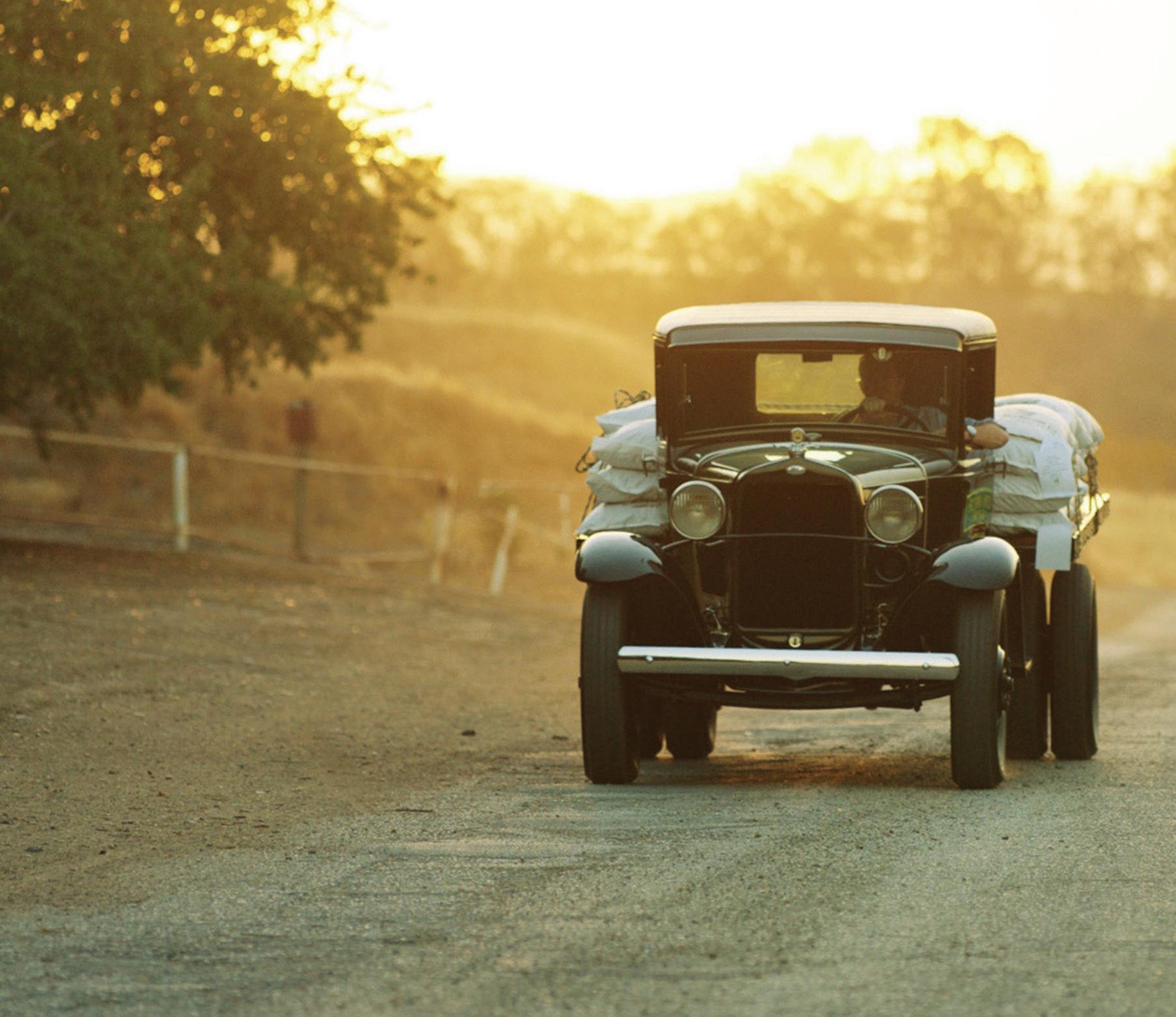
We specialize in gourmet California almond products for every occasion including weddings, birthdays, anniversaries, corporate gifts, welcome bags, VIP gifts and so much more.

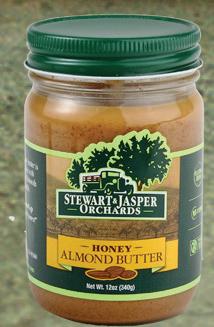


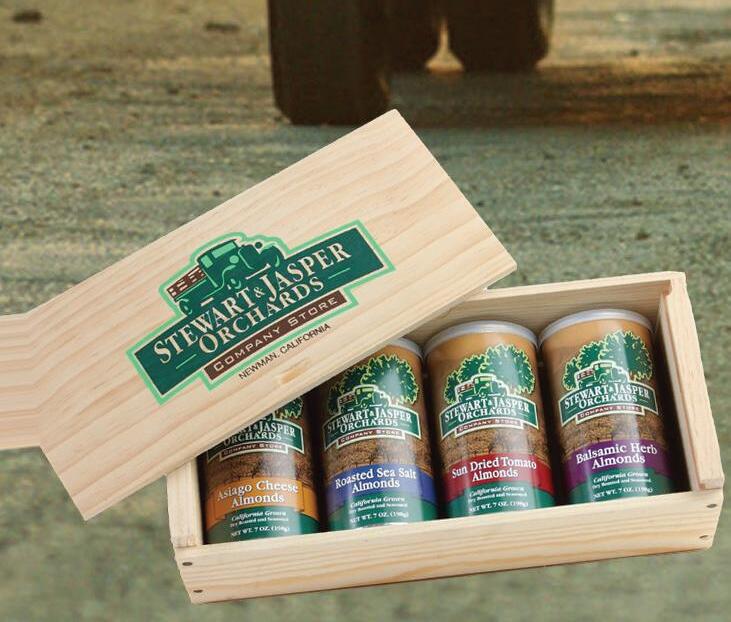




Store Hours: Closed Sunday Monday-Tuesday 11am-7pm
Wednesday-Saturday 11am-8pm


